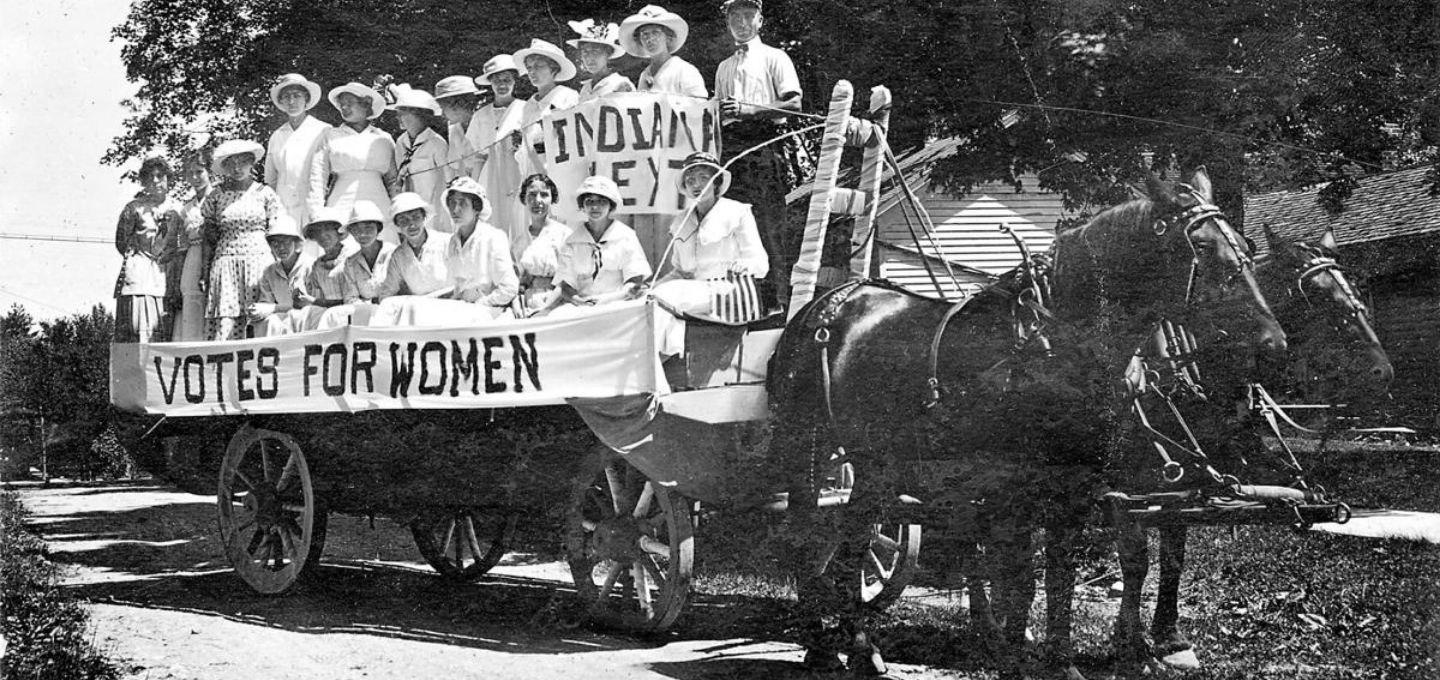Celebrating trailblazing women with Indiana roots and connections
March is Women’s History Month, so we’re celebrating some of Indiana’s pioneering female leaders. Much like last month’s Black History Month celebration of Black innovators and entrepreneurs, this list isn’t meant to be comprehensive, rather it’s meant to introduce you to some fierce women who worked to improve Indiana and cleared the way for many of today’s female leaders.
Amanda Way was born in Dublin, Ind., and was 23 when she began one of the country’s first statewide campaigns to secure Hoosier women’s right to vote in 1851. She was a suffragette, agent for the Underground Railroad, editor/owner of the Ladies Tribune newspaper in Indianapolis, teacher, Civil War battle nurse and Methodist Episcopal minister. She is also known as Indiana’s “Mother of Women’s Rights.”
Not many women fought in the Civil War. But when Lovina McCarthy Streight‘s husband, Abel, became commander of the 51st Indiana Volunteer Infantry, she and their 5-year-old son went with him. She nursed the wounded, eventually earning her the title “The Mother of the 51st.” Confederate troops captured her three times, twice exchanging her for prisoners. The third time, she brandished a gun she had stashed inside her skirts. When Streight died in 1910, she was buried alongside her husband at Crown Hill Cemetery in a funeral that included full military honors and about 5,000 mourners, including 64 survivors of the 51st.
In 1900, black journalist and activist Lillian Thomas Fox shattered the class ceiling. Hired by the white male-dominated and white-owned Indianapolis News, Fox became the first African-American writer for a white newspaper in Indiana. She wrote a regular column and features about the nearly 16,000 black Hoosiers then living in Indianapolis. Her column, News of the Colored Folk, ran until 1915 when failing eyesight forced her retirement. She was also a community organizer and nationally prominent public speaker. She founded the Indianapolis Women’s Improvement Club, was an organizing member of the Indianapolis Anti-Lynching League, Indiana’s representative to the executive committee of the National Afro-American Council and an active member of the Afro-American Council, the Negro Business League, the Atlanta Congress of Colored Women at the 1895 National Exposition and the National Association of Colored Women.
Had two of Albion Fellows Bacon‘s children not developed scarlet fever, she might never have become a crusader for better housing. But after her children fell ill, the Evansville mother of four went first to their schools and then the city’s riverfront slums, looking for the source of their infection. Her tour of the tenements opened her eyes to the horrific living conditions of her city’s poor. In 1909, Bacon drafted the first of many bills to regulate such housing. By 1913, the Indiana legislature had passed a statewide bill limited to Indianapolis and Evansville. Four years later, Bacon was once again instrumental in the passage of a law allowing for the condemnation of unsafe buildings statewide. Born in 1865, Bacon extended her efforts to juvenile justice, child welfare and city planning.
Little is written about Carrie Barnes Ross, a public school teacher who was also the first president of the first Black women’s suffrage group in Indianapolis, Branch No. 7 of the Equal Suffrage Association. She came to Indiana from Colorado where women were already allowed to vote and quickly made important connections. Her first suffrage meeting was held in the home of legendary entrepreneur Madam C.J.Walker in 1917. “We believe,” she wrote, “that colored women have need for the ballot that white women have, and a great many needs that they have not. Her obituary described her as brilliant.
Vivian Carter was record company executive whose Vee-Jay Records in Gary’s Midtown district became a major independent record label with acts including The Spaniels, Jimmy Reed, the El Dorados, John Lee Hooker, Gene Chandler, Jerry Butler, Dee Clark, The Staple Singers, and The Four Seasons, among others. Vee Jay even had secured the American distribution rights to The Beatles in 1963, but contract loopholes and lawsuits caused the company to lose them to Capitol Records. Carter and her husband owned and operated the first successful black-owned recording company in the United States
Kansas can claim Amelia Earhart, the country’s most famous aviatrix. But Indiana can claim Margaret Ray Ringenber, who completed first solo flight at the age of 19 and joined the Women Airforce Service Pilots in 1943. After a year of wartime duty, she moved to Fort Wayne and offered flying lessons. When Japan surrendered in August 1945, a local radio station hired her to drop 56,000 pamphlets on the city, heralding the war’s end. Over the years, she won more than 125 racing medals. In 1994, she raced around the world. At 84, she competed in the 29th Annual Air Race Classic, in which pilots fly more than 2,300 miles over four days. She died in a hotel room in 2008 at the age of 87. She was on her way to an air show.
Appointed in 2007, France A. Córdova was Purdue University’s first female president. She also served as professor of physics and astronomy. She led Purdue to record levels of research funding, reputational rankings, and student retention rates and expanded its role as a top research institution on the global stage. An internationally recognized astrophysicist, Córdova was chief scientist at NASA from 1993 to 1996, and won NASA’s highest honor, the Distinguished Service Medal.
Loretta Rush in 2014 became the first woman to serve as Indiana’s Chief Justice, responsible for supervising the state’s judicial branch. With millions of cases before the judicial system, the Court relies on technology to improve access and efficiency, and it was Chief Justice Rush who ensured e-filing was available to trial and appellate courts.
Margaret Heafield Hamilton was born in Paoli Indiana and was one of the first computer software programmers. She coined the term “software engineer” to describe her work. She earned her bachelor’s degree in mathematics and philosophy at Earlham College in Richmond, Indiana, and briefly taught high school mathematics after graduating. Hamilton then moved to Boston with her husband, where she accepted a job at MIT, programming software to predict the weather. In the early 1960s, she joined MIT’s Lincoln Laboratory to work on the Semi-Automatic Ground Environment project, the first U.S. air defense system, writing software to identify enemy aircraft. She joined NASA, where she led the team responsible for developing the guidance software and control systems of the in-flight command and lunar modules of the Apollo missions
Audrey Taylor emigrated from England and served in the Information Technology world for over 25 years on both sides of the pond. A strong advocate for women, education and children, she founded netlogx in 1998, growing it from a local organization to a thriving business active across the U.S. as well as in the UK since 2016. She is a board member emeritus of Women & Hi Tech.




